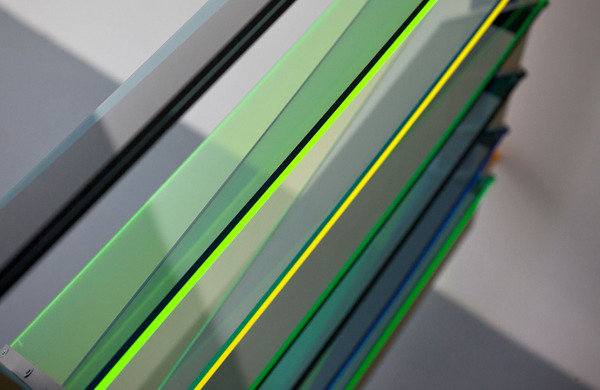Sandra Havlicek
dal 12/6/2014 al 18/7/2014
Segnalato da
12/6/2014
Sandra Havlicek
Galerie Jette Rudolph, Berlin
Flexing and pointing. The artist explores the concept of art behind autonomous objects that are detached from everyday life and creates flexible, mobile sculptures.

With “FLEXING AND POINTING, the Jette Rudolph Gallery is pleased to present the first solo show by artist Sandra Havlicek. With artworks that border on being static objects, the artist explores the concept of art behind autonomous objects that are detached from everyday life and creates flexible, mobile sculptures. In objects that oscillate between practical object and art object, the artist incorporates formal references to furniture and architecture, intentionally fusing them with material or, more precisely, with concrete objects in a permanent state of change.
Sandra Havlicek (*1984 in Frankfurt/Main) studied with Heiner Blum at the Offenbach University of Design (2004-2008) and with Tobias Rehberger at the Frankfurt Städel School (2008-2011). Between 2007 and 2013, the artist received prizes, including a scholarship from the German National Academic Foundation as well as the EXTRACT art prize awarded by the GL Strand art association in Copenhagen. In 2011, she took part in the “Encore” graduate exhibition at the MMK-Zollamt and after that, also in early 2011, in the group exhibition “Being Here & Being Thus. Sculpture, Object & Stage” at the Frankfurter Kunstverein. Havlicek lives and works in Frankfurt/Main.
Objects have an inner logic, both on the material level of structure and with regard to surface design. But in the work of artist Sandra Havlicek, these constants are disrupted by interventions and modifications that put the object in a state of flux, that imply a permanent state of change, making it impossible to assign absolute categories. Between seemingly familiar formal vocabulary and abstract object, Havlicek instead creates things and sculptures that can’t be grasped; that are constantly subject to a functional, formal or symbolic transformation.
Havlicek’s works could be compared to the ever-changing word transformations in James Joyce’s writing, where a word like “refine” can change to “a fine rain” in the next sentence. A similar flow of words, images or scenes circulates through Havlicek’s work series, making it impossible to attribute a specific intention to her works: neither by interpreting the artwork from a purely semiotic standpoint, that is, as a sign for something, nor by means of phenomenological reflection purely on the visible.
With the work “Die Große Freiheit, 4. Versuch”, 2012, Sandra Havlicek takes a modified storage unit that alludes to the private sphere and mobilizes it in the exhibition space. As a piece of furniture relieved of its function, the object still vehemently preserves a seemingly domestic character. In works that suggest both the familiar and the artificial, the processes of artistic production become apparent and, in accordance with the artist’s concept, intentionally situate the works in a space between home item and artwork. The viewer perceives specific objects as forms, which are functionally, materially and visually manipulated to such an extent that the fact that they are presented as art objects provokes obvious tension. (Text: Jette Rudolph & Ellen Martin // Translation: Cathy Lara & Associates // Bild: Wolfgang Günzel)
Opening: 13. Juni 2014, 18:00 - 22:00 Uhr
Galerie Jette Rudolph GmbH
Strausberger Platz 4, D-10243 Berlin
hours:
tue. - fr. 11am - 5pm, sat. 11am - 2pm
and by appointment



